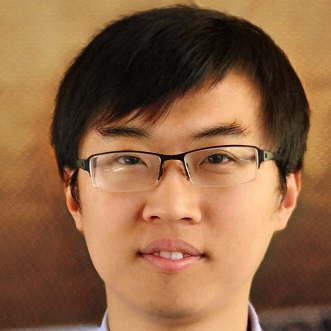
Effective July 1, Dr. Hao Su joined the Computer Science and Engineering (CSE) department as a tenure-track assistant professor at the University of California San Diego. At a macro level, he explores fundamental problems in broad disciplines related to artificial intelligence, including machine learning, computer vision, computer graphics, and robotics.
The computer scientist will participate in two recently-established research centers in UC San Diego’s Jacobs School of Engineering: the Center for Visual Computing, led by CSE Professor Ravi Ramamoorthi; and the Contextual Robotics Institute, led by CSE Professor Henrik Christensen.
“Robotics and the combination of computer vision and computer graphics are major growth areas for our department,” said CSE Chair Dean Tullsen in welcoming the department’s newest faculty member to UC San Diego. “Hao Su will play an influential role is those research centers while also teaching and working closely with students at both the graduate and undergraduate level.”
“This is an amazing opportunity for a fledgling professor to make his mark in a university that has made substantial commitments to two of my areas of concentration,” said Su. “My thrust will be to push the frontier in both fields to become a bridge that connects intellectuals across disciplinary boundaries.”
Professor Su’s research in deep learning and artificial intelligence has many potential applications for robotics, autonomous driving, virtual/augmented reality, 3D reconstruction, smart manufacturing, and more.
After working on the large-scale 2D image database ImageNet, Su is now leading construction of ShapeNet, a large-scale, 3D-centric knowledge base of objects. His work in computer vision and computer graphics generally covers joint analysis of 2D images and 3D shapes, crowdsourcing for large-scale dataset construction (e.g., ShapeNet), and scene understanding.
In particular, Su works extensively in ‘deep learning’ as it applies to understanding and interconnecting 3D data with other modalities (such as images and text). As a pioneer and founder in the new field of 3D Deep Learning, he is organizing a tutorial on the subject in July. It will take place July 26 in Honolulu, Hawaii, at the IEEE Conference on Computer Vision and Pattern Recognition (CVPR 2017).
The newly-minted professor is also the first author on two oral papers at the highly-competitive CVPR 2017 (which accepted only four percent of papers submitted for oral presentation). In “PointNet: Deep Learning on Point Sets for 3D Classification and Segmentation”, Su and his co-authors discuss the creation of a neural network to “directly consume an unordered point cloud as input without converting to other 3D representations first (such as voxel grids). The second oral paper explores “A Point Set Generation Network for 3D Object Reconstruction from a Single Image”. This paper focuses on deep learning for generating combinatorial data structures, in particular, geometrical point sets.
In a separate “spotlight” paper at CVPR, Su and his colleagues will introduce the Synchronized Spectral CNN (SyncSpecCNN), a spectral representation-based neural network. The authors ascertained that SyncSpecCNN achieved state-of-the-art performance on various semantic annotation tasks, including 3D shape part segmentation and 3D keypoint prediction.
Rounding out Su’s participation in CVPR will be two research posters: “Learning Shape Abstractions by Assembling Volumetric Primitives,” which explores a learning-based approach for 3D design; and “Learning Non-Lambertian Object Intrinsics across ShapeNet Categories,” about inferring optical material properties from a single image of an object.
Professor Su’s co-authors on the CVPR papers and posters include colleagues from Stanford as well as researchers from UC Berkeley, Tsinghua University, Microsoft Research (Asia), University of Hong Kong and the University of the Chinese Academy of Sciences.
Beyond making the move from Palo Alto to San Diego and participating in CVPR, Hao Su will be busy in coming months. He is actively looking to hire postdocs and graduate students with interests and strong background in applied machine learning (computer vision, computer graphics, robotics and machine learning).
Su also has a paper accepted to SIGGRAPH 2017 with colleagues from Stanford and Adobe Research. His August 1 presentation in Los Angeles will explore “Learning Hierarchical Shape Segmentation and Labeling from Online Repositories.” Meanwhile, Su is a Program Chair for the 5th International Conference on 3D Vision (3DV 2017), which takes place October 10-12 in Qingdao, China.
Related Links
Hao Su Website
CVPR 2017
SIGGRAPH 2017
Computer Science and Engineering

